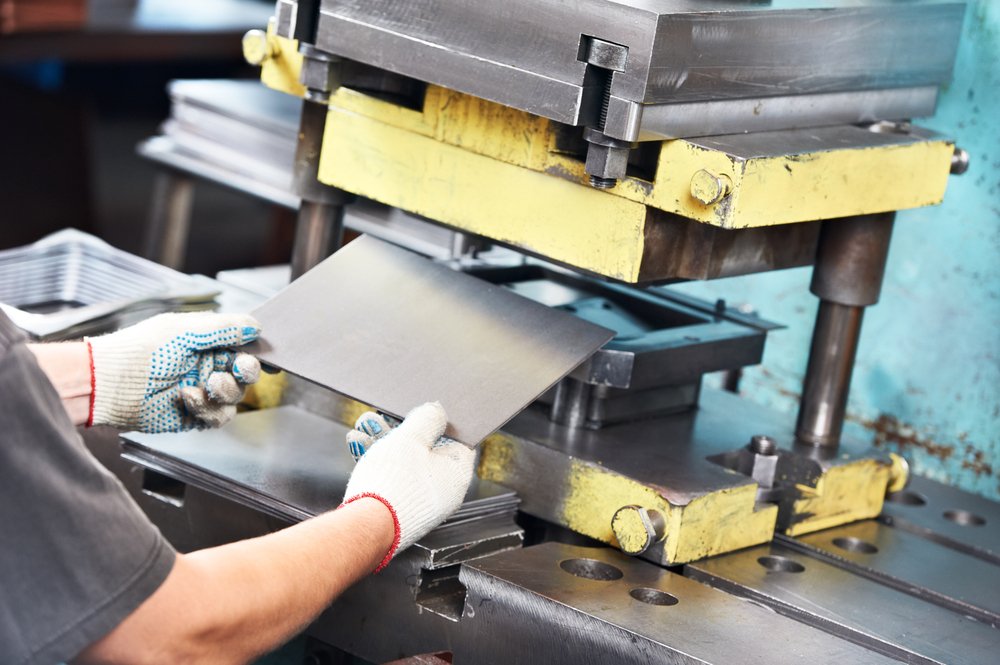Electronics is a dynamic industry that is constantly evolving. Stamping manufacturers must stay on top of current trends and develop new processes fast, accurately, and cost-effectively to remain competitive. Stamped components are found in a wide variety of electrical devices used today. Precision metal stamping is an excellent method for making electrical components because of how quickly it can be completed and its accuracy.
LEDs, for example, have grown in popularity as a lighting solution during the last few years. The LED lighting market is predicted to expand by 13% by 2022, reaching more than $54 billion in global sales. LED lighting can be used in both residential and commercial settings. Many people are also using Smartphones, augmented reality devices, and IoT-enabled products in their homes. Metal stamping is used in all these electronic devices’ components.
What are a Few Common Uses for Electronic Stamping by stamping Manufacturers?
A wide range of goods from the automotive, medical, and lighting industries rely on electronics to suit the specific needs of their target customers. Stamped metals are used by metal stamping manufacturers in several of these electrical components.
Metal stamping is used to create electronic components through electronic stamping. Metals like copper, aluminium, steel and even precious metals like platinum and gold can be used in this process. Metal stamping can be used in a variety of electrical applications, including:
- Cameras
- It is advised that electronic stamping be used for products that require precise manufacturing, such as cleaning appliances and robots.
- Computer electronics- for an accurate and precise explanation of electronic components.
- Connected audio devices
- Handheld AR gadgets
- Head-up displays
- Heating and cooling devices include washer/dryer units, refrigerators, HVAC systems, etc.
- Microwave ovens, water heaters, and the like.
- Lights- Lighting is based on highly conductive metals that have been embossed.
- Power strips and intelligent plugs
Is Electronic Stamping Worth the Investment?
Precision is the most critical factor in producing high-quality items, especially electronic devices, gadgets, and appliances. Although these materials may cost more than usual, some may be less expensive; however, there is no room for error. As a result, electronic components are typically small in size, need a large production volume, and are often customized.
Metal stamping tool and die is the only procedure to meet these requirements and assure that electrical components are formed, curved, bent, and stamped correctly. The following are the primary benefits of electronic stamping:
Cost-efficiency
The electronic metal stamping tool and die is a viable solution for large-scale production since it saves time and reduces labour expenses. Using machines provides a professional workforce and saves time because it can swiftly produce parts. If you are looking for high-quality electronic goods that are also cost-effective, you could try out electronic stamping.
Accuracy and Quality are Always Maintained
Metal stamping’s capacity to generate high-quality components while also guaranteeing precision is one of the reasons many Stamping manufacturers and producers prefer it. Stamped pieces with complex shapes can be produced frequently and simultaneously using electronic stamping.
Effortless and Fast
In a short amount of time, stamping electrical components enables companies to reach optimum production. Professionally controlled metal stamping tools and dies ensure no time or resources are wasted throughout the manufacturing process.
Conclusion
A wide range of applications can benefit from electronic stamping, including consumer electronic devices (e.g., Smartphones and tablets), industrial electronics (e.g., robotics and automation), medical devices (e.g., pacemakers and defibrillators), and aerospace and automotive. Stamped parts and components are used in nearly every industry today, making them essential.
Related posts
Subscribe Now
* You will receive the latest news and updates on your favorite celebrities!
Meet the Author

Gillion is a multi-concept WordPress theme that lets you create blog, magazine, news, review websites. With clean and functional design and lots of useful features theme will deliver amazing user experience to your clients and readers.
Learn moreCategories
- Animals (6)
- Business (579)
- Cooking (3)
- Design (17)
- Education (59)
- Entertainment (62)
- FASHION (89)
- Fashion (39)
- Featured (19)
- FOOD (42)
- Guide (55)
- Health (290)
- HOME (184)
- Interior (14)
- Life (8)
- Lifestyle (111)
- Motivation (6)
- News (47)
- People (4)
- Photography (5)
- Review (4)
- Style (4)
- TECH (176)
- Travel (107)
- Uncategorized (1,441)



Stay connected